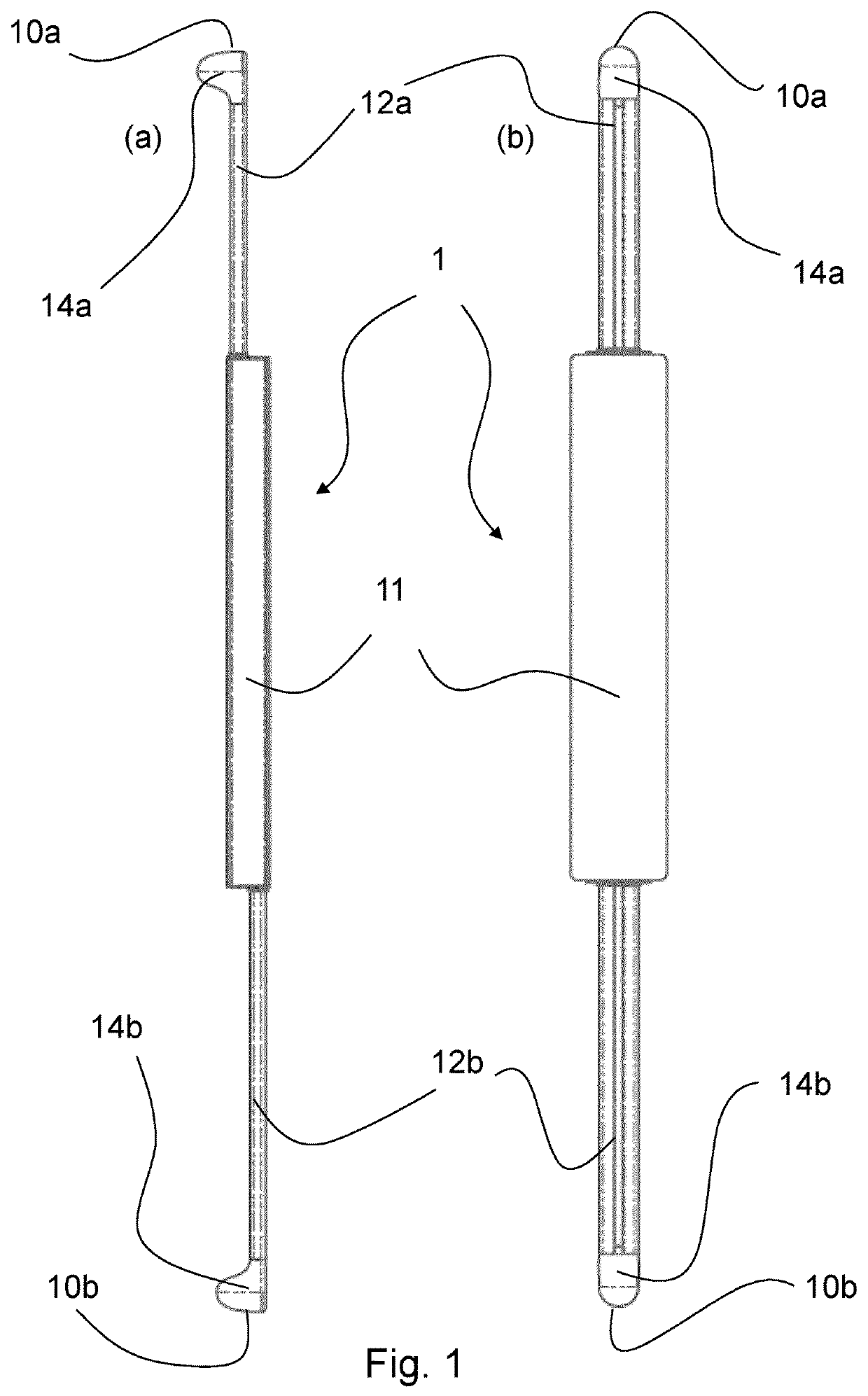Spinal alignment component
a technology of spine and component, applied in the field of spine alignment components, can solve the problems of poor health, reduced productivity of workforce, poor quality of life, etc., and achieve the effects of reducing costs, finely adjusting the length of the elongate member, and facilitating the transfer of the devi
- Summary
- Abstract
- Description
- Claims
- Application Information
AI Technical Summary
Benefits of technology
Problems solved by technology
Method used
Image
Examples
first embodiment
[0162]FIG. 1 shows a side elevation (a) and rear elevation (b) of a spinal alignment component 1 according to the invention.
[0163]The spinal alignment component is made up of an elongate housing 11 made of rigid plastics material which independently receives and guides two rigid elongate members 12a and 12b. First rigid elongate member 12a extends upwardly (as seen in FIG. 1) out of the housing 11 through a first aperture (not shown) and second rigid elongate member 12b extends downwardly (as seen in FIG. 1) out of the housing 11 through a second aperture (not shown). Each of the first and second rigid elongate members 12a, 12b are slidably engaged with the housing 11 within respective internal channels defined by the housing 11. FIG. 1 shows the component in a fully extended configuration, with each of the first and second rigid elongate members 12a, 12b extended out of the housing 11 to the greatest extent possible. Further extension may be prevented by a detent mechanism within t...
PUM
 Login to View More
Login to View More Abstract
Description
Claims
Application Information
 Login to View More
Login to View More - R&D
- Intellectual Property
- Life Sciences
- Materials
- Tech Scout
- Unparalleled Data Quality
- Higher Quality Content
- 60% Fewer Hallucinations
Browse by: Latest US Patents, China's latest patents, Technical Efficacy Thesaurus, Application Domain, Technology Topic, Popular Technical Reports.
© 2025 PatSnap. All rights reserved.Legal|Privacy policy|Modern Slavery Act Transparency Statement|Sitemap|About US| Contact US: help@patsnap.com



